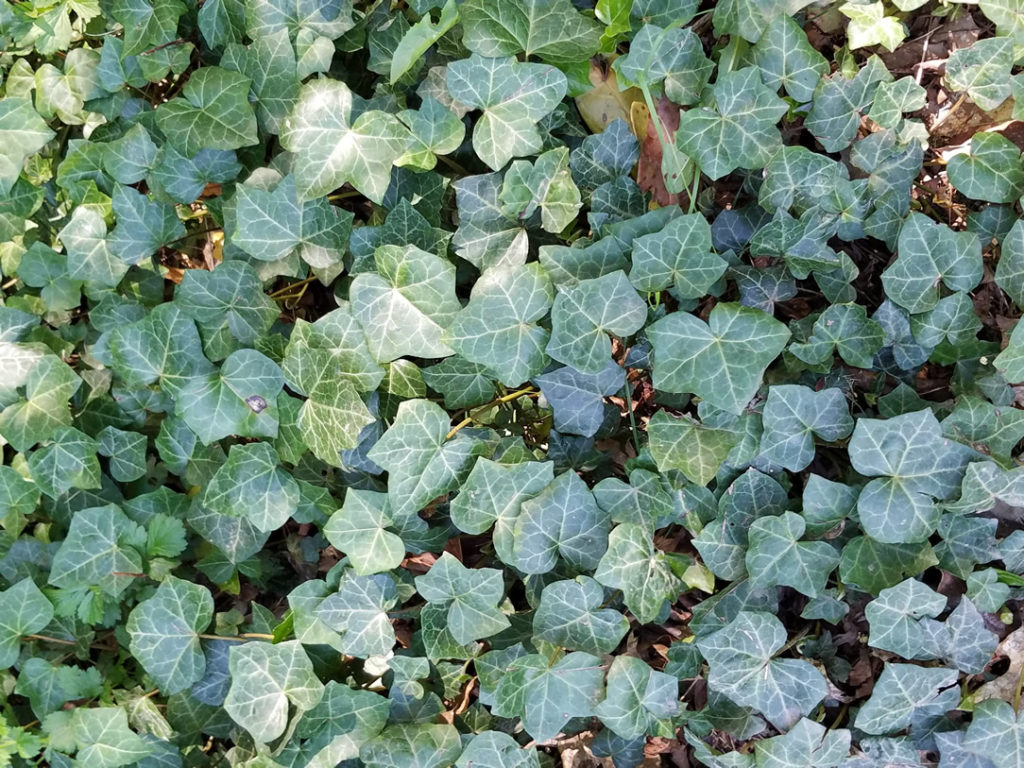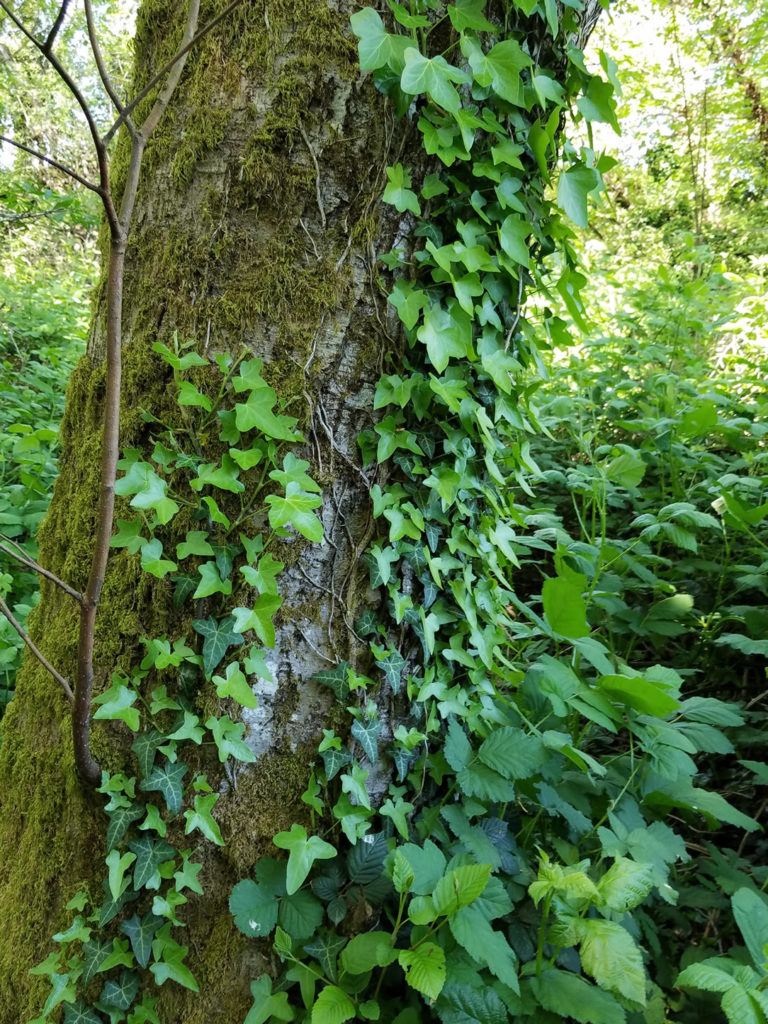

English Ivy, Hedera helix
Araliaceae – Ginseng family
The generic name is derived from the Latin term for ivy. “Helix” is Greek for “spiral” describing the growth habit of the vine.
The appealing nature of ivy has resulted in many cultivars widely used as groundcovers and ornamental vines. However, in the woodland environment ivy has a dark side as the vine progressively smothers acre upon acre of native flowers and shrubs including salal, duckfoot, and trillium. Even plants perched up on stumps are in mortal danger as the vines readily creep up trees and stumps, rooting along the stem to strangle red huckleberry, wood fern, and other native dwellers. When stems climb off the ground, they flower and produce clusters of shiny black berries. The berries are poisonous to humans, but birds find them quite edible. Thus ivy is widely dispersed in suburban woods and neighborhoods by birds.
Here’s a link for more information on how to eradicate this non-native, invasive plant
https://weedwise.conservationdistrict.org/hehe
Information courtesy of “The View From Springbrook Park; an Illustrated Natural History” by Ed Chinn.
Photos by Laura Tanz
Sponsored by Friends of Springbrook Park; Lake Oswego, OR